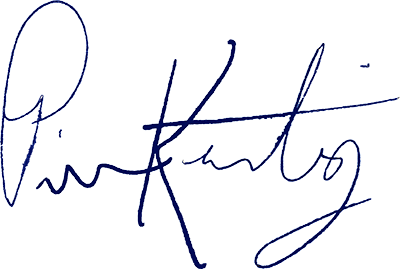Why is it a good idea to study social trends and patterns?
Well, for the same reason it is a good idea for an artist to study form. For an artist to get good at his craft, he must usually spend thousands of hours getting familiar with the ways in which his fellow artists, as well as artists before him, conform (or don’t conform) to stylistic qualities particular to the craft in question. A carpenter must study, for example, not only how to make chairs and tables, but the various styles of chair- and table-making. This is what it means to study form.
Composers study the sonatas of Mozart, Haydn and Beethoven. Artists study (hopefully) all of the different styles of art, from Renaissance depth perception to French impressionism and German expressionism. And then, after years of doing this, the hopeful idea is to find one’s own unique way of orchestrating sounds, or applying paint to a canvas.
But how do styles or form come into being in the first place? Well, the answer is ultimately a mystery, but what is generally agreed upon is that through looking at the trajectory, the evolution, of an art form, we can see various repetitions—little, or perhaps even big-picture, characteristics that show us that a patternhas emerged. This type of observation is called induction.
(It took me a whole semester of 18th- and 19th-century Music Analysis to learn what I just laid down in the above paragraph, so don’t get discouraged if your head is starting to swim right about now.)
Just as in art forms, we can use our gift of induction to discern emerging trends and patterns in economy and society. There are economic and social forms, just as there are artistic forms.
If you don’t think of yourself as creative, or an artist, it may be hard to see how this fact applies to you. But it does. It applies to everyone. Let me explain.
First of all, you’re creative. Everybody is. So don’t worry about that.
Second of all, you don’t have to identify as an “artist” to understand what a “trend” is. We see trends in just about everything in day-to-day life: trends in the weather and trends in traffic are two practical examples. But you may also associate the word “trend” with “trend-y”: trendy clothing, trendy music, and of course, what’s trending on social media.
So even if you don’t know what sonata form is, you know that there are certain patterns that make something “relevant” or “cool.”
If you agree with this, then now you know that you have a working process of induction. It happens even without you consciously realizing it. So, the same type of process that goes on when a musicologist analyzes a Beethoven sonata is also going on (albeit on a simpler, less voluntary level) within you as you navigate through society.
So, back to why this matters. If you’re a part of this modern world (meaning, if you’re not Amish or living in a cave), you are probably already involuntarily picking up on what’s fast becoming a “new norm.” You might have already seen a surge of people expressing themselves in countless ways, much of these on social media. You might have already noticed that YouTube has replaced television as the primary source of media entertainment. You might have already picked up on the multiplicity of ways to make money outside of what was once considered a “normal” 9 to 5. And you might have seen a huge shift towards entrepreneurship and self-employment, not only in others, but maybe even in yourself.
There is, however, another possibility. You may be looking around and wondering why things aren’t working for you. You may be feeling lost or “left behind.” You may be wondering why some people seem to just roll through life and “get it” so easily, while you continue to struggle and scratch your head. You may have a feeling that you’re missing out.
What’s most likely is that you’re going through a plethora of all the feelings and the intuitions and the observations described in the last two paragraphs. And this is—get ready to breathe a sigh of relief—perfectly normal. It’s a sign that your process of induction is working. It’s a sign that you’re, on some level, aware and engaged, and not withdrawn and checked out.
But imagine if, like the musicologist or the carpenter, you actually took a voluntary effort to study what’s going on around you? To actually, not only observe and haphazardly respond, but know what to expect from the new socio-economic playground you find yourself in? To learn about it like a general learns about the terrain on which the battle is to be fought, or a pro golfer walks the links before showing up for the major, or a Wall Street investor does market research before he decides how he’s going to play his game.
There are a lot of moving parts. This dojo is dynamic. It’s like a video game where every single pixel is hyper-responsive. So don’t meander. Don’t underestimate the all-encompassing nature of this new reality. The good news is, it’s not beyond grasping. There are very relatable features underlying this symphony. Clear, consistent trends. A pattern. One might even say, a form.
Yes, there is a form behind the seemingly unfathomable new world. It’s a new style of communicating, of interacting, of existing together.
Don’t be the carpenter who just slaps some pieces of wood together. Don’t be the musicologist who gawks at the symphony. Don’t be the artist who splashes paint on a canvas without knowing who Jackson Pollock was.
There’s a proverb repeated to the point of being cliché: “Catch a man a fish, and you’ll feed him for a day. Teach him how to fish, and you’ll feed him for a lifetime.”
Learn how chairs work. Learn how symphonies work. Learn how Van Gogh’s stars seem to shine right into your soul.
What I mean is…
Learn how to fish.




I took to heart what you wrote today! You should write a book, Pierson. You express things in such a way that I can picture them in my mind. God bless you!